Audi Q4 e-tron vs BMW 2 Series Active Tourer – Which car suits you better?
Everyday use, family trips or long-distance drives – here’s where the differences show.
Discover whether Audi Q4 e-tron or BMW 2 Series Active Tourer fits your lifestyle better.
Costs and Efficiency:
When it comes to price and running costs, the biggest differences usually appear. This is often where you see which car fits your budget better in the long run.
BMW 2 Series Active Tourer has a evident advantage in terms of price – it starts at 31000 £, while the Audi Q4 e-tron costs 39600 £. That’s a price difference of around 8529 £.
As for range, the Audi Q4 e-tron performs significantly better – achieving up to 554 km, about 469 km more than the BMW 2 Series Active Tourer.
Engine and Performance:
Power, torque and acceleration are the classic benchmarks for car enthusiasts – and here, some clear differences start to show.
When it comes to engine power, the Audi Q4 e-tron has a slight edge – offering 340 HP compared to 326 HP. That’s roughly 14 HP more horsepower.
In acceleration from 0 to 100 km/h, the Audi Q4 e-tron is hardly perceptible quicker – completing the sprint in 5.40 s, while the BMW 2 Series Active Tourer takes 5.50 s. That’s about 0.10 s faster.
In terms of top speed, the BMW 2 Series Active Tourer performs distinct better – reaching 238 km/h, while the Audi Q4 e-tron tops out at 180 km/h. The difference is around 58 km/h.
There’s also a difference in torque: Audi Q4 e-tron pulls clearly perceptible stronger with 679 Nm compared to 477 Nm. That’s about 202 Nm difference.
Space and Everyday Use:
Beyond pure performance, interior space and usability matter most in daily life. This is where you see which car is more practical and versatile.
Both vehicles offer seating for 5 people.
In curb weight, BMW 2 Series Active Tourer is evident lighter – 1545 kg compared to 2035 kg. The difference is around 490 kg.
In terms of boot space, the Audi Q4 e-tron offers somewhat more room – 535 L compared to 470 L. That’s a difference of about 65 L.
In maximum load capacity, the Audi Q4 e-tron performs hardly perceptible better – up to 1490 L, which is about 35 L more than the BMW 2 Series Active Tourer.
When it comes to payload, Audi Q4 e-tron minimal takes the win – 515 kg compared to 505 kg. That’s a difference of about 10 kg.
Who comes out on top?
Overall, the Audi Q4 e-tron shows itself to be leaves the rival little chance and secures the title of DriveDuel Champion.
It convinces with the more balanced overall package and proves to be the more versatile choice for everyday use.
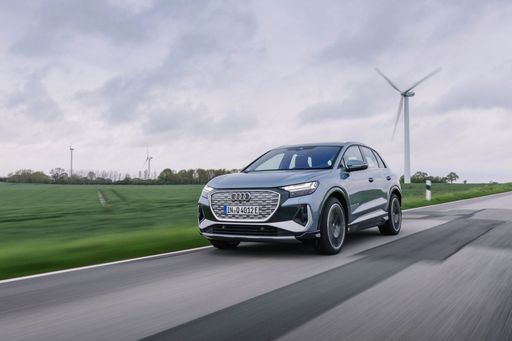
Audi Q4 e-tron
Audi Q4 e-tron
The Audi Q4 e-tron seamlessly combines sustainable driving with premium comfort, embodying the brand's commitment to electric mobility. Its sleek design and spacious interior create an inviting atmosphere, perfect for those who appreciate both style and practicality. With a focus on innovative technology, the Q4 e-tron offers a dynamic driving experience that appeals to modern drivers seeking eco-friendly alternatives.
details @ audi-mediacenter.com
@ audi-mediacenter.com
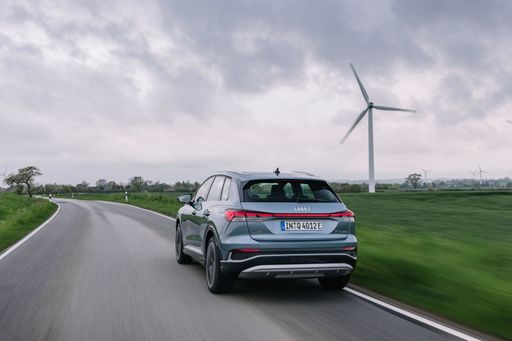 @ audi-mediacenter.com
@ audi-mediacenter.com
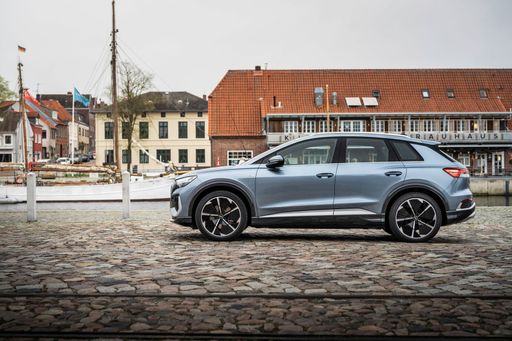 @ audi-mediacenter.com
@ audi-mediacenter.com
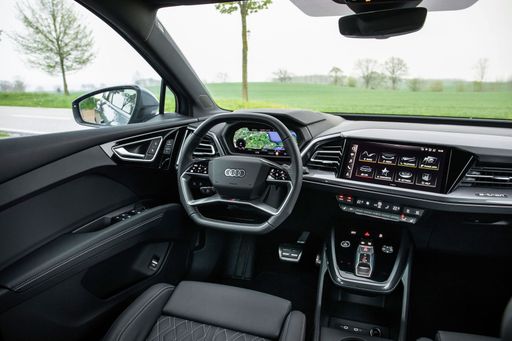 @ audi-mediacenter.com
@ audi-mediacenter.com
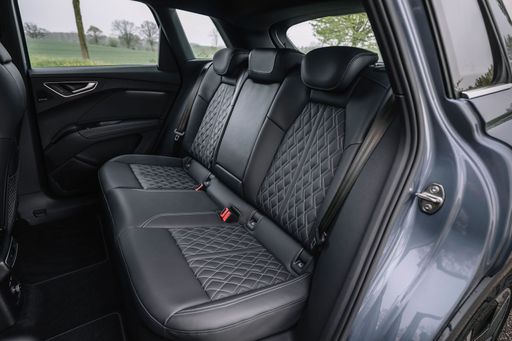 @ audi-mediacenter.com
@ audi-mediacenter.com
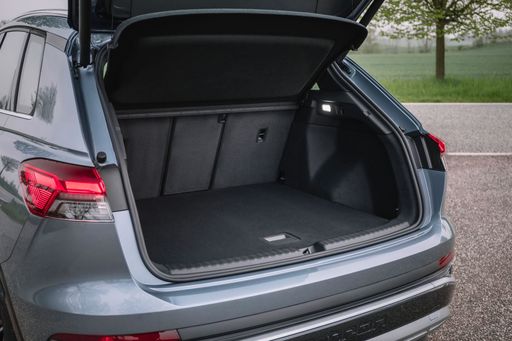 @ audi-mediacenter.com
@ audi-mediacenter.com
BMW 2 Series Active Tourer
The BMW 2 Series Active Tourer offers a blend of versatility and modern design, making it an ideal choice for drivers seeking practicality without compromising on style. Its spacious interior and advanced technology features ensure a comfortable and connected driving experience. With a focus on efficiency and performance, this vehicle stands out as a refined option in the compact MPV segment.
details @ press.bmwgroup.com
@ press.bmwgroup.com
 @ press.bmwgroup.com
@ press.bmwgroup.com
 @ press.bmwgroup.com
@ press.bmwgroup.com
 @ press.bmwgroup.com
@ press.bmwgroup.com

|

|
|
|
|
Costs and Consumption |
|
|---|---|
|
Price
39600 - 58800 £
|
Price
31000 - 48000 £
|
|
Consumption L/100km
-
|
Consumption L/100km
0.9 - 6.2 L
|
|
Consumption kWh/100km
15.9 - 17.4 kWh
|
Consumption kWh/100km
-
|
|
Electric Range
406 - 554 km
|
Electric Range
85 km
|
|
Battery Capacity
59 - 77 kWh
|
Battery Capacity
14.20 kWh
|
|
co2
0 g/km
|
co2
20 - 140 g/km
|
|
Fuel tank capacity
-
|
Fuel tank capacity
45 - 54 L
|
Dimensions and Body |
|
|---|---|
|
Body Type
SUV
|
Body Type
MPV
|
|
Seats
5
|
Seats
5
|
|
Doors
5
|
Doors
5
|
|
Curb weight
2035 - 2235 kg
|
Curb weight
1545 - 1920 kg
|
|
Trunk capacity
520 - 535 L
|
Trunk capacity
406 - 470 L
|
|
Length
4588 mm
|
Length
4386 mm
|
|
Width
1865 mm
|
Width
1824 mm
|
|
Height
1614 - 1632 mm
|
Height
1576 mm
|
|
Max trunk capacity
1460 - 1490 L
|
Max trunk capacity
1370 - 1455 L
|
|
Payload
505 - 515 kg
|
Payload
465 - 505 kg
|
Engine and Performance |
|
|---|---|
|
Engine Type
Electric
|
Engine Type
Plugin Hybrid, Petrol, Petrol MHEV, Diesel, Diesel MHEV
|
|
Transmission
Automatic
|
Transmission
Automatic
|
|
Transmission Detail
Reduction Gearbox
|
Transmission Detail
Dual-Clutch Automatic
|
|
Drive Type
Rear-Wheel Drive, All-Wheel Drive
|
Drive Type
All-Wheel Drive, Front-Wheel Drive
|
|
Power HP
204 - 340 HP
|
Power HP
122 - 326 HP
|
|
Acceleration 0-100km/h
5.4 - 8.1 s
|
Acceleration 0-100km/h
5.5 - 10.3 s
|
|
Max Speed
160 - 180 km/h
|
Max Speed
195 - 238 km/h
|
|
Torque
310 - 679 Nm
|
Torque
230 - 477 Nm
|
|
Number of Cylinders
-
|
Number of Cylinders
3 - 4
|
|
Power kW
150 - 250 kW
|
Power kW
90 - 240 kW
|
|
Engine capacity
-
|
Engine capacity
1499 - 1998 cm3
|
General |
|
|---|---|
|
Model Year
2023 - 2025
|
Model Year
2024
|
|
CO2 Efficiency Class
A
|
CO2 Efficiency Class
B, E, D
|
|
Brand
Audi
|
Brand
BMW
|
What drive types are available for the Audi Q4 e-tron?
The Audi Q4 e-tron is offered with Rear-Wheel Drive or All-Wheel Drive.
The prices and data displayed are estimates based on German list prices and may vary by country. This information is not legally binding.
